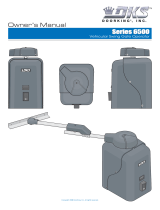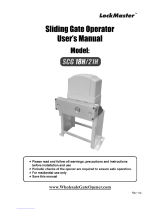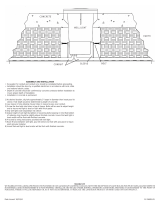
TABLE OF CONTENTS
Important Notices......................................................................................................................................................8
Important Safety Instructions ....................................................................................................................................9
Restrictions and Warnings........................................................................................................................................10
Entrapment Prevention .............................................................................................................................................10
Glossary ..................................................................................................................................................................12
Section 1 – Installation
1.1 Specifications ...........................................................................................................................................13
1.2 Concrete Pad............................................................................................................................................14
1.3 Operator Installation .................................................................................................................................15
1.4 Chain Installation ......................................................................................................................................16
1.5 Front Mount Installation ............................................................................................................................17
1.6 Rear Mount Installation.............................................................................................................................18
1.7 Warning Sign Installation..........................................................................................................................19
Section 2 – Wiring
Conduits ...................................................................................................................................................21
2.1 High Voltage Connections ........................................................................................................................22
2.2 Control Wiring...........................................................................................................................................23
2.3 Secondary Entrapment Protection Device Wiring
2.3.1 Non-Contact Sensors ...............................................................................................................24
2.3.2 Contact Sensors.......................................................................................................................25
2.4 Loop Detector Wiring................................................................................................................................26
2.5 Gate Tracker™ Connections ....................................................................................................................27
2.6 Auxiliary Devices
2.6.1 Alarm Reset Switch ..................................................................................................................28
2.6.2 Auxiliary Stop Switch................................................................................................................28
2.7 Master / Slave Wiring
2.7.1 Operator Interface ....................................................................................................................29
2.7.2 Secondary Entrapment Protection Device Wiring ....................................................................30
2.8 Terminal Identification and Description
2.8.1 Main Terminals.........................................................................................................................31
2.8.2 Limit Switch Connector.............................................................................................................32
2.8.3 Reversing Device Connector....................................................................................................32
Section 3 – Adjustments
3.1 Circuit Board Adjustments ........................................................................................................................33
3.2 Switch Settings .........................................................................................................................................35
3.2.1 SW 1 (Upper Switch) Description and Function .......................................................................35
3.2.2 SW 2 (Lower Switch) Description and Function .......................................................................35
3.3 Limit Switch Adjustment ...........................................................................................................................36
3.4 Inherent Reverse Adjustment ...................................................................................................................37
6






















